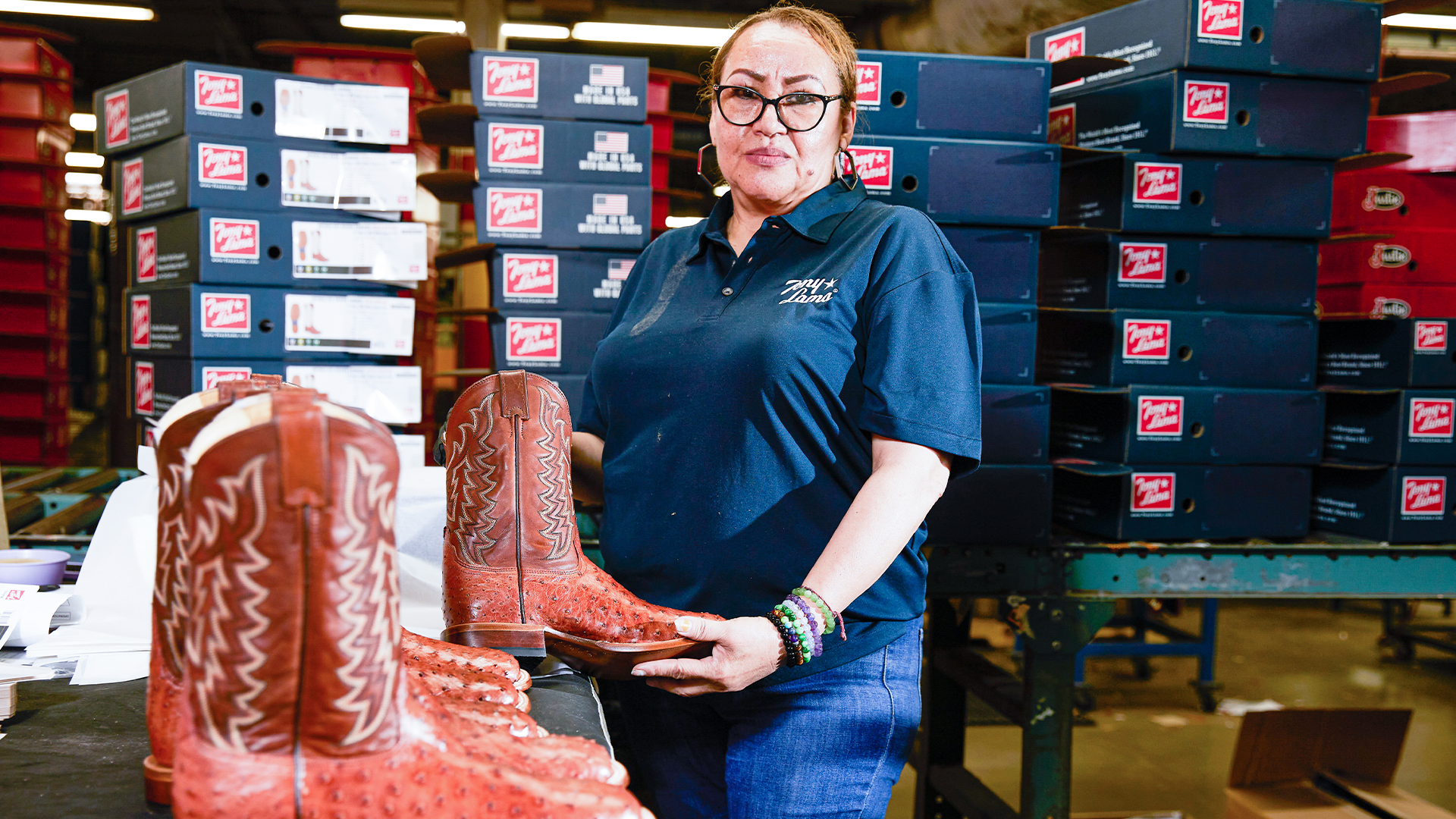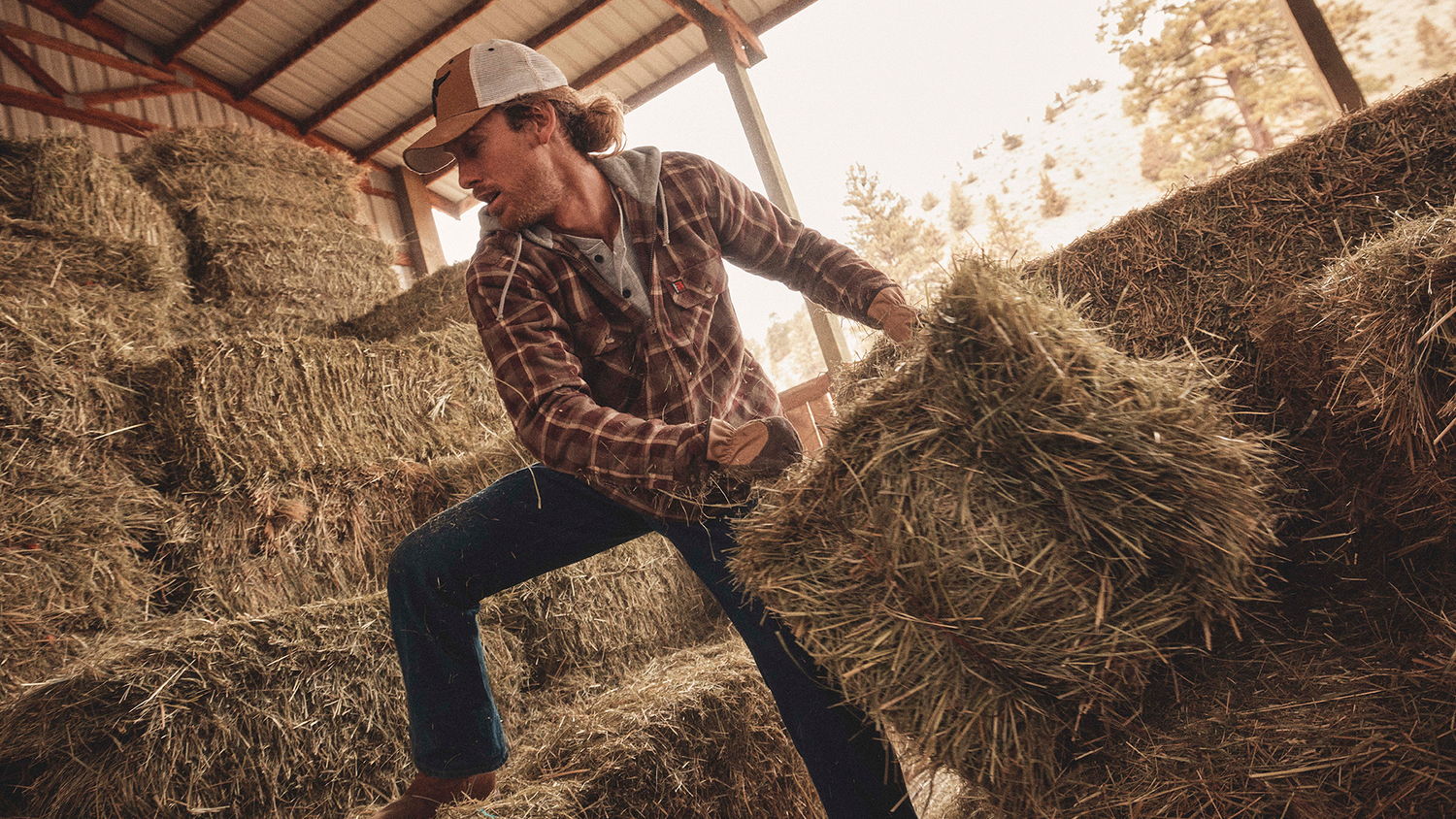Howdy, folks! Have you ever slipped on a pair of cowboy boots and wondered how they come to life? From the finest leather to the last stitch, making cowboy boots is an art form—one that’s been perfected over generations.
Today, I’m taking you behind the scenes to show you exactly how cowboy boots are made and why craftsmanship matters. Saddle up, and let’s step into the world of boot-making!

Choosing the Right Materials: Where It All Begins
Every great pair of cowboy boots starts with high-quality materials. The type of material not only determines the durability but also the overall look and feel of the boots.
- Cowhide: The most common and durable leather for everyday wear.
- Exotic Skins: Boots made from ostrich, caiman, alligator, lizard, and snakeskin offer a luxurious feel and unique patterns.
- Suede & Nubuck: Softer, stylish options that bring a more modern Western look.
- Sole & Heel Materials: Leather soles for tradition, rubber soles for durability and comfort.
Once the materials are selected, they are cut and shaped by expert craftsmen, ensuring that each piece is up to quality standards.

Crafting the Boot’s Upper: The Heart of the Design
The upper is what gives cowboy boots their distinctive look, with intricate stitching, tooling, and decorative inlays.
- Cutting & Stitching: Skilled artisans carefully cut the leather and sew the pieces together, creating bold Western designs and reinforcing durability.
- Embossing & Tooling: Many boots, especially Lucchese and Tony Lama, feature hand-tooled designs for extra personality.
- Pull Straps & Collars: These are added to the boot to make pulling them on easier, and they’re often customized with brand logos or details.
This part of the process brings style and personality to each pair of boots.

The Vamp & Toe Box: Structure and Fit
The vamp (the top front of the boot) and toe box define how a cowboy boot fits and feels.
- Toe Shapes: Cowboy boots come in various shapes, including round toe, square toe, pointed toe, and snip toe, each offering a unique look and fit.
- Supportive Toe Box: Some boots include a steel or hard-toe box to maintain their shape and add protection.
This is where boots start to take their final shape before assembly.

The Lasting Process: Giving Boots Their Shape
A boot last is a mold in the shape of a foot that helps form the final structure of the boot.
- The leather is stretched over the last, ensuring a snug and comfortable fit.
- Skilled craftsmen then stitch the welt, the piece that attaches the sole to the upper.
- This is where the magic happens—the boots begin to look like the final product!
Brands like Anderson Bean and Ariat use advanced techniques to balance comfort and durability in this step.

Attaching the Sole & Heel: Built to Last
Cowboy boots need to withstand years of wear, so the sole and heel are critical to the process.
- Leather Soles: Preferred by traditionalists, they mold to the foot over time and offer a classic Western feel.
- Rubber Soles: More common in work boots, these provide extra traction and durability.
- Goodyear Welt Construction: A high-quality technique that allows boots to be resoled, extending their lifespan.
Once the sole is attached, the heel is nailed or glued on, often featuring different heights depending on function (higher for riding, lower for walking).

Final Touches & Quality Control
Before boots hit the shelves, they go through rigorous quality checks.
- The boots are polished, conditioned, and finished for that perfect shine.
- Craftsmen inspect each pair for flaws in stitching, fit, and construction.
- Some brands add hand-burnished finishes, creating unique color variations and depth in the leather.
Only after passing quality control do boots get packaged and sent out to boot lovers like you!

Handcrafted vs. Machine-Made: What’s the Difference?
Handcrafted boots, like those from Lucchese, Tecovas, and Anderson Bean, are made by skilled artisans using time-honored techniques. This results in superior quality, comfort, and longevity.
Machine-made boots, like some styles from Ariat and Twisted X, use modern manufacturing processes to ensure consistency and affordability while still delivering high-quality materials.
Whether handcrafted or machine-made, a great pair of boots should feel like an extension of you.

Conclusion
Now that you know how cowboy boots are made, it’s easy to appreciate the craftsmanship and detail that go into every pair. From the finest materials to expert stitching, every boot tells a story of tradition, function, and Western style.
Looking for your next perfect pair of cowboy boots? Visit The Boot Jack online or in-store to browse top brands like Lucchese, Ariat, Anderson Bean, and more. Whether you need classic ranch boots or exotic leather showstoppers, we’ve got you covered. Shop Now!





